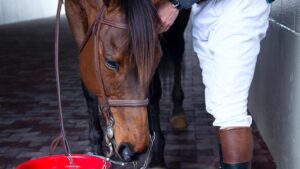Horseback riding is an art form that has been practiced for centuries, dating back to the earliest civilizations. Throughout history, different styles of riding have emerged, each with its own unique techniques and traditions. Whether you are a seasoned equestrian or a newcomer to the world of horseback riding, understanding the various styles is crucial to mastering the craft. In this guide, we will delve into the world of horseback riding styles, exploring the nuances and differences that make each style distinct. So saddle up and join us on a journey through the diverse and fascinating world of equestrianism.
– Key Differences Between Western and English Horseback Riding Styles
When it comes to horseback riding, the Western and English styles are two of the most prominent techniques practiced by riders around the world. While both styles involve riding horses, there are key differences in the way riders communicate with their horses and the equipment used during riding.
Western Riding:
- Originated in the United States and is commonly associated with cowboys.
- Features the use of a Western saddle, which is larger and heavier than an English saddle.
- Riders typically hold the reins in one hand and use their legs to communicate with the horse.
English Riding:
- Originated in Europe and is commonly associated with formal equestrian events.
- Features the use of an English saddle, which is smaller and lighter than a Western saddle.
- Riders hold the reins in both hands and use subtle movements of their hands and legs to communicate with the horse.
– Exploring the Varied Techniques of Dressage Riding
Dressage riding is a beautiful equestrian discipline that has been around for centuries. This intricate style of riding focuses on the communication between horse and rider through subtle cues and movements. To excel in dressage, riders must demonstrate precise control, balance, and harmony with their horse.
There are several techniques and movements that riders must master in dressage, including the half-pass, piaffe, passage, and extended trot. Each movement requires precision and timing to execute correctly. Dressage riders spend hours perfecting their position, aids, and timing to communicate effectively with their horse.
One of the key principles of dressage riding is the concept of “rideability,” which refers to the horse’s willingness to respond to the rider’s aids. Through consistent training and practice, dressage riders develop a deep connection with their horses, working together to achieve seamless communication and harmony in each movement. Dressage is not just a sport—it is an art form that highlights the beauty and grace of the horse and rider working as one.
– Unpacking the Essential Gear for Jumping and Eventing Riders
When it comes to the world of horseback riding, jumping and eventing are two popular styles that require specific gear to ensure both horse and rider are safe and comfortable. In order to excel in these disciplines, riders must be equipped with the essential gear that will help them navigate the various obstacles and challenges that come with jumping and eventing.
Essential Gear for Jumping Riders:
- Riding Helmet
- Riding Boots with Heels
- Protective Vest
- Breeches or Jodhpurs
Essential Gear for Eventing Riders:
- Cross-Country Boots
- Body Protector
- Cross-Country Rein Bridle
- Stirrup Irons with Treads
– Choosing the Right Horse for Your Preferred Riding Style
When it comes to horseback riding, choosing the right horse for your preferred riding style is crucial. There are various riding styles, each requiring specific attributes in a horse to excel. Understanding these styles can help you select the perfect companion for your equestrian adventures.
English Riding: This style focuses on precision, elegance, and communication between horse and rider. English riding encompasses disciplines such as dressage, show jumping, and eventing. Horses suited for English riding should have refined movement, good manners, and athleticism. Breeds like Thoroughbreds, Warmbloods, and Irish Sport Horses excel in these disciplines.
Western Riding: In contrast to English riding, western riding emphasizes comfort, stability, and a strong bond with the horse. Western disciplines include reining, cutting, and barrel racing. Horses appropriate for western riding should be calm, responsive, and versatile. Breeds like Quarter Horses, Paints, and Appaloosas are popular choices for western riding.
– Tips for Transitioning Between Different Horseback Riding Styles
When transitioning between different horseback riding styles, it’s important to understand the unique characteristics of each style in order to successfully adapt and excel. Here are some tips to help you navigate the nuances of various riding disciplines:
Be Open-Minded: One of the keys to smoothly transitioning between different horseback riding styles is to approach each new style with an open mind. Be willing to learn new techniques and methods, and be flexible in your approach to riding. Keeping an open mind will help you adapt more quickly and effectively.
Focus on Fundamentals: Regardless of the riding style you are transitioning to, it’s essential to focus on the fundamentals of good horsemanship. Make sure your position, balance, and cues are correct and consistent, as these skills form the foundation of successful riding in any discipline.
| Dressage | Requires precision and harmony between horse and rider |
| Jumping | Focuses on navigating obstacles with speed and accuracy |
| Western | Emphasizes communication and partnership with the horse |
In Retrospect
As you embark on your journey to understand the various horseback riding styles, remember that each discipline has its own unique charm and challenges. Whether you dream of galloping through the countryside in the exhilarating sport of cross-country riding or gracefully navigating a dressage test with precision and elegance, the world of equestrianism offers something for everyone. So saddle up, explore the different styles, and immerse yourself in the beauty and grace of horseback riding. Happy trails!



